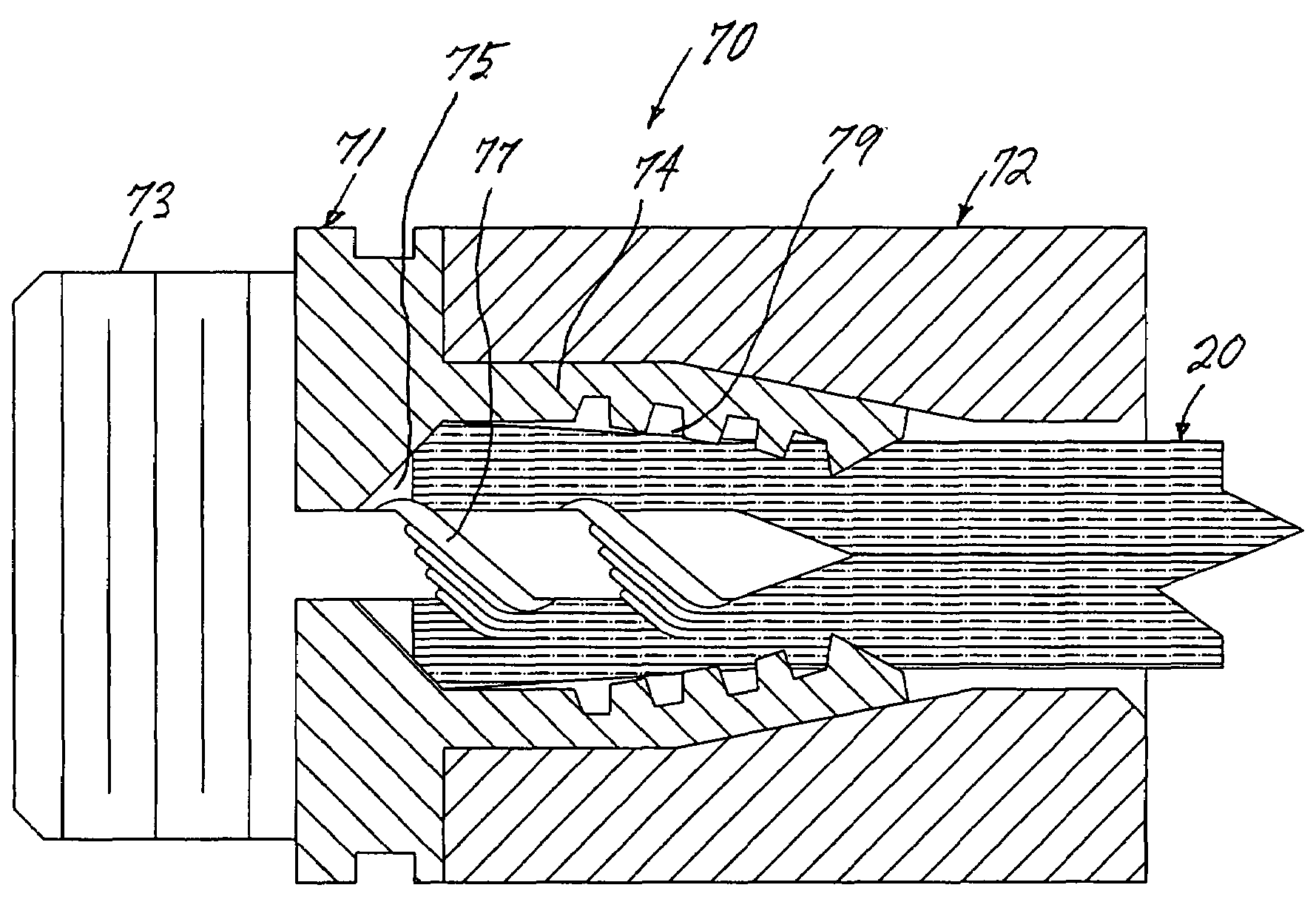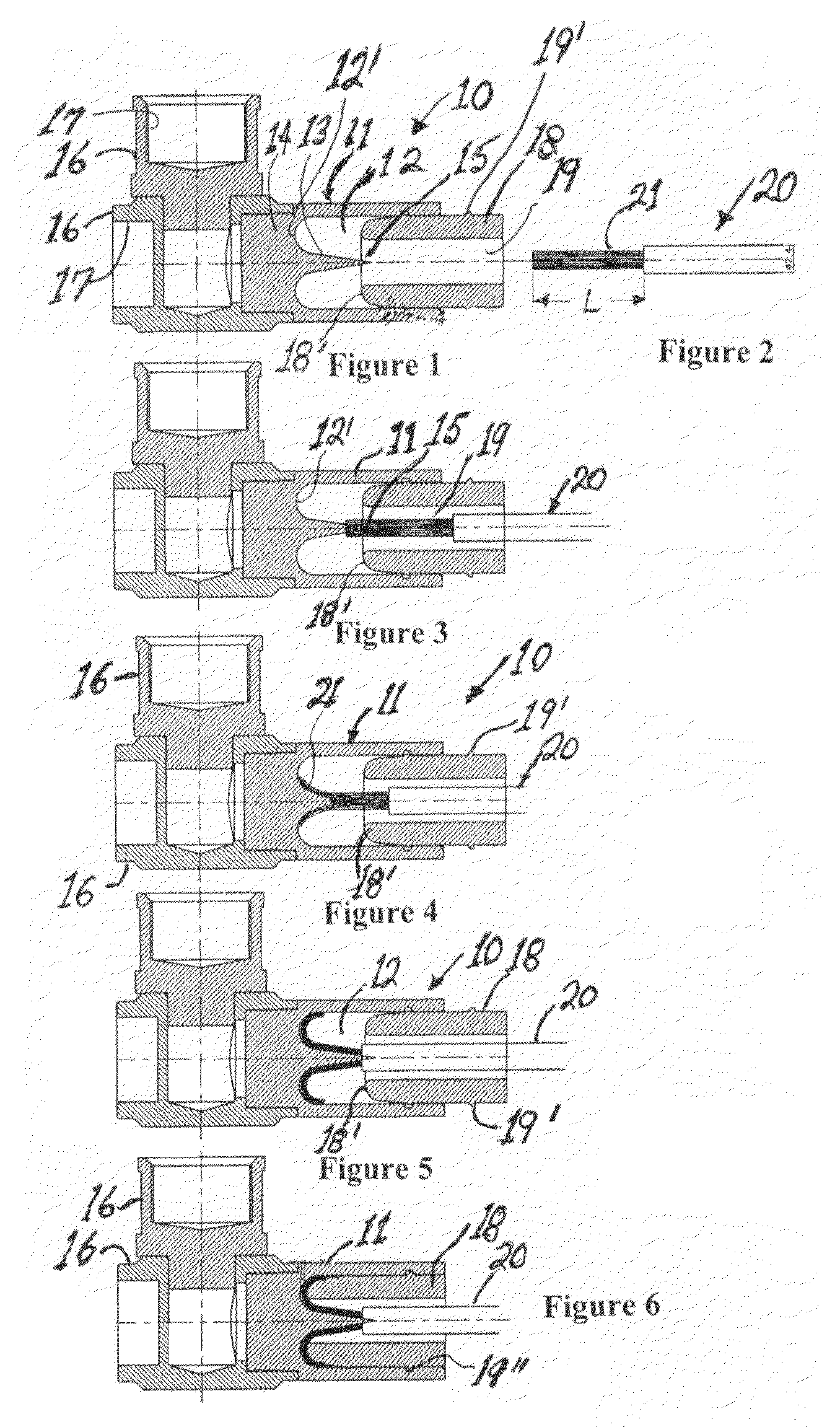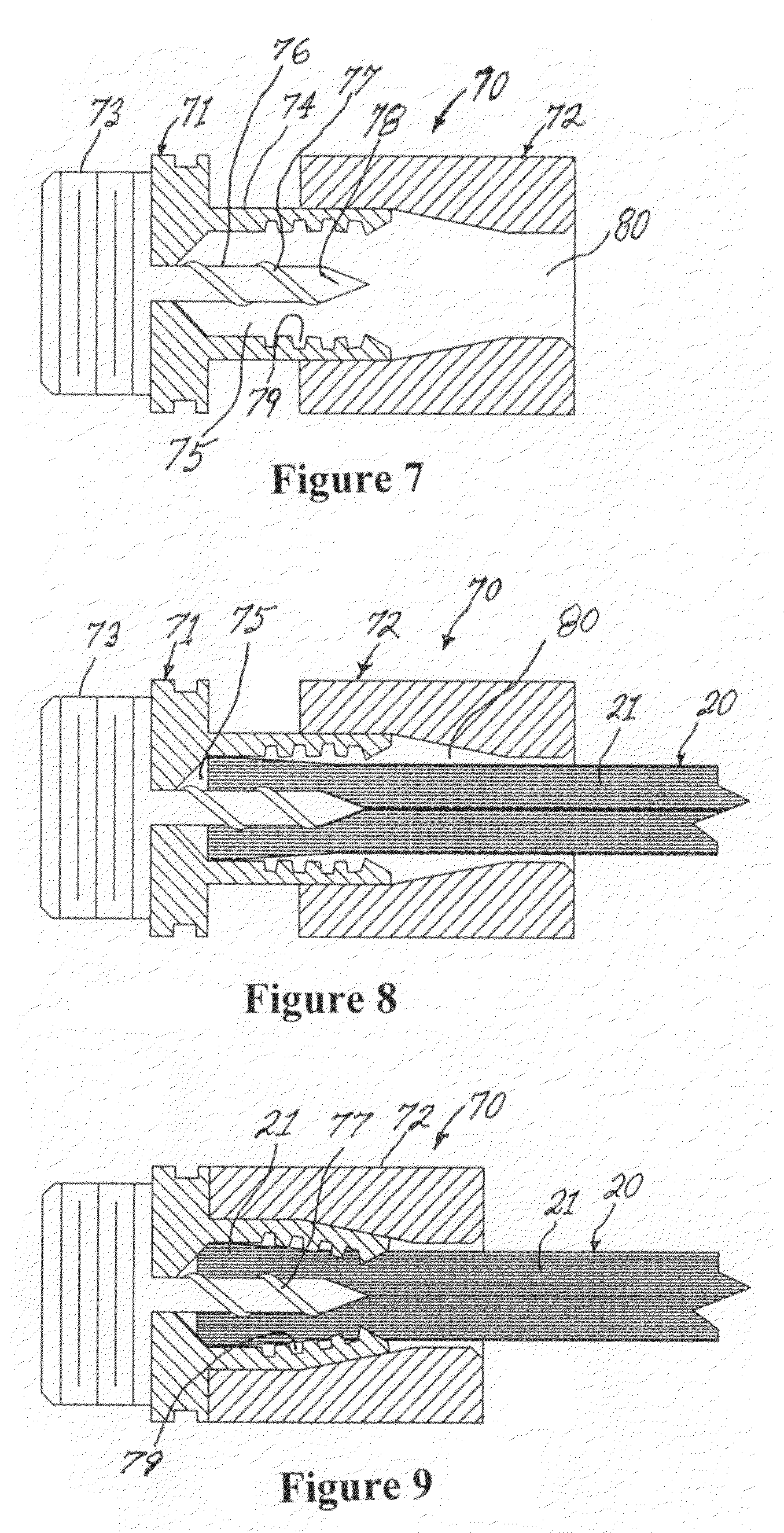Compression connector for stranded wire
a compression connector and stranded wire technology, applied in the direction of contact members penetrating/cutting insulation/cable strands, electrical appliances, fastening/insulating connecting parts, etc., can solve the problems of insufficient initial crimp or radial force applied to hold the wire, inability to continue, and loose caps for the assembly that can be easily lost, so as to facilitate compression and prevent retraction
- Summary
- Abstract
- Description
- Claims
- Application Information
AI Technical Summary
Benefits of technology
Problems solved by technology
Method used
Image
Examples
Embodiment Construction
[0034]FIG. 1 is a compression-type connector 10 operable for attachment to a wire having a stranded central conductor in accordance with a first embodiment of the present invention. The connector 10 is illustrated in cross-sectional side view in an open position prior to attachment to a wire. The connector 10 includes a tubular connector body 11 having an axial cavity 12 therewithin. The leading end 12′ of the axial cavity 12 is contoured and has the form of the surface of a hemitorus. A conical centerpost 13 is disposed within the axial cavity 12 at the leading end thereof. The base 14 of the conical centerpost 13 is circular and centered within the leading end 12′ of axial cavity 12. The apex 15 of the conical centerpost is axially disposed to be colinear with the axis of the axial cavity. The leading end of the connector body 11 is attached to at least one, and more preferably two, as shown in the figures, connector terminal adapter 16 having a threaded interior surface 17. The c...
PUM
 Login to View More
Login to View More Abstract
Description
Claims
Application Information
 Login to View More
Login to View More - R&D
- Intellectual Property
- Life Sciences
- Materials
- Tech Scout
- Unparalleled Data Quality
- Higher Quality Content
- 60% Fewer Hallucinations
Browse by: Latest US Patents, China's latest patents, Technical Efficacy Thesaurus, Application Domain, Technology Topic, Popular Technical Reports.
© 2025 PatSnap. All rights reserved.Legal|Privacy policy|Modern Slavery Act Transparency Statement|Sitemap|About US| Contact US: help@patsnap.com



